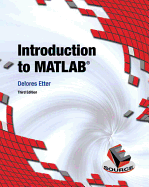Essentials of Marketing Research 6th Edition Babin Solutions Manual
$35.00 Original price was: $35.00.$26.50Current price is: $26.50.
Essentials of Marketing Research 6th Edition Babin Solutions Manual
This is completed downloadable of Essentials of Marketing Research 6th Edition Babin Solutions Manual

Product Details:
- ISBN-10 : 9781305263475
- ISBN-13 : 978-1305263475
- Author: Barry J. Babin, William G. Zikmund
ESSENTIALS OF MARKETING RESEARCH, 6E, provides a concise, yet complete guide to the design, execution, analysis, and reporting of marketing research to support smart business decisions. Covering essential principles and techniques in a streamlined, engaging way, the text equips readers with the core knowledge and skills needed to manage marketing research effectively. This proven text provides valuable business context while introducing both traditional research methods, such as designing questionnaires, and the latest technological advances, including current data collection devices, basic data analysis tools, practical approaches to data analytics, and the impact of social media and artifactual online data. Designed specifically for readers who prefer a concise introduction to marketing research topics, the Sixth Edition of this trusted text features updates based on recent trends and technology, including an increased emphasis on ethical and international issues, reflecting their growing importance in modern marketing research.
- Part One: Introduction
- Ch 1: The Role of Marketing Research
- Ch 1: Learning Outcomes
- Ch 1: Introduction
- What Is Marketing Research?
- Applied and Basic Marketing Research
- Marketing Research and Strategic Management Orientation
- Planning and Implementing a Marketing Mix
- When Is Marketing Research Needed?
- Marketing Research in the Twenty-First Century
- Ch 1: Summary
- Ch 1: Key Terms and Concepts
- Ch 1: Questions for Review and Critical Thinking
- Ch 1: Research Activities
- Ch 2: Harnessing Big Data into Better Decisions
- Ch 2: Learning Outcomes
- Ch 2: Introduction
- Data, Information, and Intelligence Equal Value
- The Characteristics of Valuable Information
- Decision Support Systems
- Database Sources and Vendors
- Marketing Analytics
- Data Technology and Ethics
- Ch 2: Summary
- Ch 2: Key Terms and Concepts
- Ch 2: Questions for Review and Critical Thinking
- Ch 2: Research Activities
- Ch 3: The Marketing Research Process
- Ch 3: Learning Outcomes
- Ch 3: Introduction
- Decision Making and Marketing Research
- Types of Marketing Research
- Stages in the Research Process
- The Research Program Strategy
- Ch 3: Summary
- Ch 3: Key Terms and Concepts
- Ch 3: Questions for Review and Critical Thinking
- Ch 3: Research Activities
- Ch 4: The Human Side of Marketing Research: Organizational and Ethical Issues
- Ch 4: Learning Outcomes
- Ch 4: Introduction
- Who Should Do the Research?
- Working in the Marketing Research Field
- Conflict between Marketing Management and Marketing Research
- Ethical Issues in Marketing Research
- The Researcher and Conflicts of Interest
- Ch 4: Summary
- Ch 4: Key Terms and Concepts
- Ch 4: Questions for Review and Critical Thinking
- Ch 4: Research Activities
- Part Two: Designing Research Studies
- Ch 5: Qualitative Research Tools
- Ch 5: Learning Outcomes
- Introduction: What Is Qualitative Research?
- Contrasting Qualitative with Quantitative Methods
- Qualitative Research and Exploratory Research Designs
- Qualitative Research Orientations
- Common Techniques Used in Qualitative Research
- Preparing a Focus Group Outline
- Modern Technology and Qualitative Research
- Exploratory Research in Science and in Practice
- Ch 5: Summary
- Ch 5: Key Terms and Concepts
- Ch 5: Questions for Review and Critical Thinking
- Ch 5: Research Activities
- Ch 6: Secondary Data Research in a Digital Age
- Ch 6: Learning Outcomes
- Ch 6: Introduction
- Using Secondary Data in Marketing Research
- Typical Objectives for Secondary-Data Research Designs
- Sources of Internal Secondary Data
- External Secondary Data Sources
- Single-Source and Global Research in the Big Data Era
- Ch 6: Summary
- Ch 6: Key Terms and Concepts
- Ch 6: Questions for Review and Critical Thinking
- Ch 6: Research Activities
- Ch 7: Survey Research
- Ch 7: Learning Outcomes
- Ch 7: Introduction
- The Types of Information Gathered Using Surveys
- Sources of Error in Surveys
- Ways Marketing Researchers Conduct Survey Interviews
- Conducting Personal Interviews
- Surveys Using Self-Administered Questionnaires
- Pretesting Survey Instruments
- Ethical Issues in Survey Research
- Ch 7: Summary
- Ch 7: Key Terms and Concepts
- Ch 7: Questions for Review and Critical Thinking
- Ch 7: Research Activity
- Ch 8: Observation
- Ch 8: Learning Outcomes
- Ch 8: Introduction
- Technology and Observation in Marketing Research
- Direct and Contrived Observation
- Ethical Issues in the Observation of Humans
- Observation of Physical Objects
- Mechanical Observation
- Measuring Physiological Reactions
- Eye-Tracking Monitor
- Ch 8: Summary
- Ch 8: Key Terms and Concepts
- Ch 8: Questions for Review and Critical Thinking
- Ch 8: Research Activities
- Ch 9: Conducting Marketing Experiments
- Ch 9: Learning Outcomes
- Ch 9: Introduction
- The Characteristics of Experiments
- Basic Issues in Experimental Design
- Demand Characteristics and Experimental Validity
- Internal versus External Validity
- Test-Marketing
- Ethical Issues in Experimentation
- Ch 9: Summary
- Ch 9: Key Terms and Concepts
- Ch 9: Questions for Review and Critical Thinking
- Ch 9: Research Activities
- Part Three: Measurement
- Ch 10: Measurement and Attitude Scaling
- Ch 10: Learning Outcomes
- Ch 10: Introduction
- What Needs to Be Measured?
- Levels of Scale Measurement
- Indexes and Composites
- Validity
- What Is an Attitude?
- Attitude Measures and Scaling
- Attitudes and Intentions
- Ch 10: Summary
- Ch 10: Key Terms and Concepts
- Ch 10: Questions for Review and Critical Thinking
- Ch 10: Research Activities
- Ch 11: Questionnaire Design
- Ch 11: Learning Outcomes
- Ch 11: Introduction
- Basic Considerations in Questionnaire Design
- Question Phrasing: Open- or Closed-Ended Statements?
- Avoiding Mistakes
- Order Bias
- Survey Technology
- Pretesting and Revising Questionnaires
- Ch 11: Summary
- Ch 11: Key Terms and Concepts
- Ch 11: Questions for Review and Critical Thinking
- Ch 11: Research Activity
- Part Four: Sampling and Statistical Theory
- Ch 12: Sampling Designs and Sampling Procedures
- Ch 12: Learning Outcomes
- Ch 12: Introduction
- Why Sample?
- Identifying a Relevant Population and Sampling Frame
- Random Sampling and Nonsampling Errors
- Probability versus Nonprobability Sampling
- What Is the Appropriate Sample Design?
- Ch 12: Summary
- Ch 12: Key Terms and Concepts
- Ch 12: Questions for Review and Critical Thinking
- Ch 12: Research Activity
- Ch 13: Big Data Basics: Describing Samples and Populations
- Ch 13: Learning Outcomes
- Ch 13: Introduction
- Descriptive Statistics and Basic Inferences
- Distinguish between Population, Sample, and Sample Distribution
- Central-Limit Theorem
- Estimation of Parameters and Confidence Intervals
- Sample Size
- Assess the Potential for Nonresponse Bias
- Ch 13: Summary
- Ch 13: Key Terms and Concepts
- Ch 13: Questions for Review and Critical Thinking
- Ch 13: Research Activities
- Part Five: Basic Data Analytics
- Ch 14: Basic Data Analysis
- Ch 14: Learning Outcomes
- Ch 14: Introduction
- Coding Qualitative Responses
- The Nature of Descriptive Analysis
- Creating and Interpreting Tabulation
- Data Transformation
- Hypothesis Testing Using Basic Statistics
- Significance Levels and p-values
- Univariate Tests of Means
- Ch 14: Summary
- Ch 14: Key Terms and Concepts
- Ch 14: Questions for Review and Critical Thinking
- Ch 14: Research Activities
- Ch 15: Testing for Differences between Groups and for Predictive Relationships
- Ch 15: Learning Outcomes
- Ch 15: Introduction
- What Is the Appropriate Test Statistic?
- Cross-Tabulation Tables: The X2 Test for Goodness-of-Fit
- The t-Test for Comparing Two Means
- One-Way Analysis of Variance (ANOVA)
- Statistical Software
- General Linear Model
- Ch 15: Summary
- Ch 15: Key Terms and Concepts
- Ch 15: Questions for Review and Critical Thinking
- Ch 15: Research Activities
- Ch 16: Communicating Research Results
- Ch 16: Learning Outcomes
- Ch 16: Introduction
- The Project and the Report
- Using Tables Effectively
- Using Charts Effectively
- Oral Presentation
- Reports on the Internet and Follow-Up
- Ch 16: Summary
- Ch 16: Key Terms and Concepts
- Ch 16: Questions for Review and Critical Thinking
- Ch 16: Research Activity
- A Final Note on Marketing Research
- Part Six: Comprehensive Cases with Computerized Databases
- Comprehensive Cases
- Case 1: Running the Numbers: Does It Pay?
- Case 2: Good Times at GoodBuy?
- Case 3: Attiring Situation
- Case 4: Values and the Automobile Market
- Case 5: Say It Ain’t So! Is This the Real Thing?
- Case 6: TABH, INC., Automotive Consulting
- Case 7: Knowing the Way
- Endnotes
- Index
People Also Search:
essentials of marketing research
essentials of marketing research 6th edition babin
essentials of marketing research 6th edition babin download scribd
essentials of marketing research 6th edition babin solution manual download pdf
Related products
Solution Manual
Solution Manual for Data Structures and Other Objects Using C++, 4/E Michael Main, Walter Savitch
Solution Manual
Solution Manual for Absolute C++, 5/E 5th Edition Walter Savitch
Solution Manual
International Accounting Doupnik 4th Edition Solutions Manual
Solution Manual
Solution manual for Accounting: Tools for Business Decision Making Kimmel Weygandt Kieso 5th Edition











